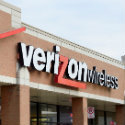A Rewheel study based on factors including macro cell site counts and customers' average data usage indicates Verizon, Jio and MTS operate networks that could be constrained.

Verizon's 4G network is among the most overloaded in the world from a capacity standpoint, according to new figures from research and consulting firm Rewheel.
Other major wireless network operators in similar situations include Jio in India and MTS in Russia, the firm said.
Figure 1:  Verizon's 4G network may suffer from congestion, according to Rewheel.
Verizon's 4G network may suffer from congestion, according to Rewheel.
Click here for a larger version of this image.
(Source: Rewheel)
Rewheel's calculations are based on a number of elements including the number of macro cell sites employed by each operator, their spectrum holdings, the efficiency of the network technology they're using and the number of customers they have, as well as the amount of data those customers use.
To be clear, network capacity is a closely guarded secret among wireless network operators, and the vast majority loudly proclaim their ability to handle customers' data loads. Verizon is no different.
Indeed, the operator early last year revealed a chart highlighting its increasing network capacity. Verizon argued that it can handle four times as much traffic than it could in 2010 using the same amount of spectrum, and that its network capacity margin had widened over the course of the past five years.
Verizon said it has been able to keep pace with increasing traffic on its network in part thanks to new networking technologies like MIMO, 256 QAM, small cells and other LTE technologies. Verizon recently disclosed that it counts around 14,000 small cells today.
Verizon's capacity disclosures – the operator reiterated late last year that its network capacity expanded amid the pandemic – were designed to blunt analyst concerns that Verizon wouldn't be able to keep pace with its customers' data demands. For example, the analysts at New Street Research warned in 2015 that Verizon would rapidly run out of unused spectrum, a situation that would force it to purchase spectrum from the likes of Dish Network. While that didn't happen, Verizon did purchase millimeter wave (mmWave) spectrum from XO and Straight Path, which Verizon is now using for 5G.
Verizon also recently agreed to spend a whopping $53.4 billion on midband C-band spectrum licenses for 5G. Analysts widely argued that the eye-watering amount of money that Verizon dropped in the C-band auction reflects the operator's network capacity constraints.
Verizon executives, though, have repeatedly argued that the operator's network is not congested.
Related posts:
— Mike Dano, Editorial Director, 5G & Mobile Strategies, Light Reading | @mikeddano
About the Author(s)
You May Also Like











